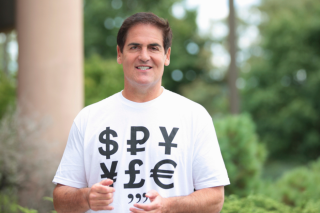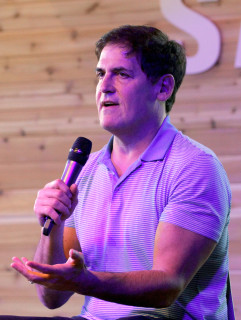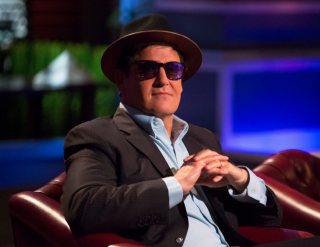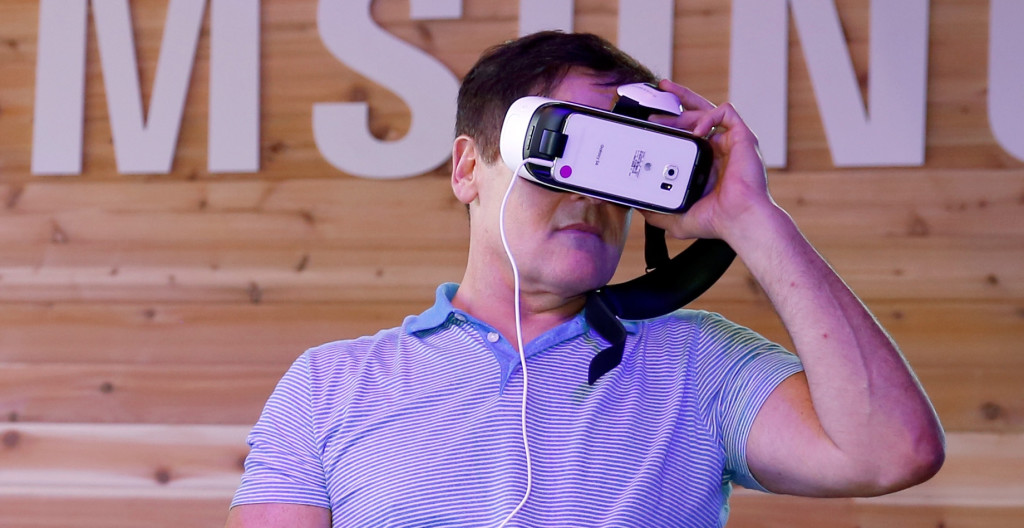Mark Cuban has one of the best seats in the house every time he steps foot in an NBA arena—directly behind the bench of the basketball team he owns.
He’s within shouting distance of the referees, within high-five distance of fans, and just close enough to his players to read a season’s worth of body language. His micro-level of involvement with the Dallas Mavericks has materialized into hardwood success that martini-sipping owners in the skybox should rival.
One way the NBA is trying to bring the entire world to the courtside seats Cuban and the well-off fans of his ilk own is through virtual reality.
At the start of the season, the league had a watershed moment when the Hornets-Warriors season opener was streamed over the Internet live in VR. It became the first such broadcast of any major U.S. sporting event, and in turn, established the NBA as the first major sport to lead the VR wagon.

Cuban’s series of investments over the last handful of years prove he’s bullish on VR, but he immediately pumps the brakes when asked if the immersive experience can put fans in his seat, or even impact ticket sales.
“Not even a little bit. It has zero chance of impacting our business. The whole ‘front-row experience’ doesn’t work, and won’t.” Cuban told [a]listdaily in an exclusive interview. “I would rather be in the top row at a game than watching a live VR stream, and I don’t see that changing in many, many years.”
For the most part, Cuban is right. Although landing seats in an NBA arena could cost a pretty penny, physically being in a stadium is still a better experience than an incredibly isolated one with gear strapped to your head for three hours. How it’s great, for example, is for the Mavericks fans in Germany to immediately transplant themselves to a game in Dallas on a second’s notice to watch Dirk Nowitzki play. One could even argue VR experiences that make fans feel closer to their favorite teams actually make them go to games in person even more. Since VR for mass consumption is still very much in a nascent form, there are tech limitations and wrinkles that need to be ironed out.
“The cameras are not close to ready,” says Cuban. “The cameras are a long way from being able to support live [programming] in a meaningful way. … Where [virtual reality] can be fun is enhancing the streaming video experience.”
The possibility of the NBA’s and TNT’s partnership with NextVR—the tech company that captured and delivered the Hornets-Warriors game—changing the future of sports broadcasts in a significant fashion is still “a few years away,” Cuban says.

The billionaire Shark Tank star says he’s most interested in non-entertainment and non-live VR content like medical, business and vertical applications, and is captivated by live 2D video integrated with complementary content. He brings up watching a Mavericks game while being able to turn to one side for fantasy stats, and to the other for live stats as an example. Cuban’s quick to encourage that the current VR flaws offer entrepreneurs an opportunity to master the media through innovation by creating unique experiences around such mediums as live 2D and 360-degree, on-demand video.
Then there is the mobile component. Television networks can’t really give viewers exactly what they want, which is to do everything on their phones. As Samsung pioneers mobile VR—they partnered with the NBA to capture All-Star Weekend in 360 this year and are leveraging their sponsorship with LeBron James to create content—how can the league’s broadcast partners deliver with a VR experience that captivates a mainstream audience?
“I think the first step is to adapt existing steaming apps to work in [Samsung] Gear VR goggles,” Cuban says. “Watching your stream on what looks like a huge movie theater screen is the best first step. That will get people an incentive to experiment with basic VR. Watching Netflix on Gear VR is a great experience that all streamers should copy.”
Cuban’s vested interests in VR dates back to the iPad photo app Condition One of which he invested $500,000 in. In 2014, he invested $3 million in seed funding for Virtuix Omni. By CES in Las Vegas this year, the gaming treadmill was hosting a VR eSports tournament and attracting every eyeball on the convention floor.
Last year, he put VR on center stage yet again when he gifted $5 million to his alma mater Indiana University to further develop the technology; it yielded the “Mark Cuban Center for Sports Media and Technology.” In February, after collaborating with the Dallas-based company BigLook360, the school introduced VR and Hoosier Hysteria to IU basketball fans with Gear VR headsets.
Like any of his investments, Cuban has personal preferences, and the so-called secret sauce; he’s definitely high on the advanced technology to further enhance the sports world and bring fans closer to their favorite teams.

The money he moves into industries—recently it’s been eSports and daily fantasy sites—can have an impact akin to a sizable sports bet shifting the lines in Vegas. Herds of opportunists usually follow.
His advice to anyone looking to invest and getting into the Olympic-sized pool that is virtual reality is a lot simpler: “Do your homework,” he says. “VR means different things to different people.”
A magician never reveals his secrets.
Follow Manouk Akopyan on Twitter @Manouk_Akopyan.

